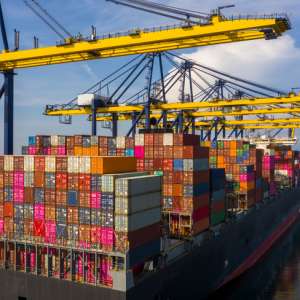In the world of international trade, one small code can make a big difference. Have you ever wondered how customs officials know exactly what’s in a shipment without opening every box? The answer lies in the Harmonized System (HS) Code. In this article, we’ll dive into what HS Codes are, why they’re crucial for US businesses, and how to find the right code for your products. HS Codes play a vital role in several aspects of international trade, such as Tariffs and Taxes, Trade Compliance, Statistical Analysis.
Want To Compare The Best Express, Air Freight, Sea Freight, Rail Freight & Trucking Rates So As To Have Better Control On Cost?
What is HS Code?
The Harmonized Commodity Description and Coding Systems, commonly referred to as the “Harmonized System” or “HS Code,” is a six-digit standardized numerical method for classifying traded products. It was developed and is maintained by the World Customs Organization.
The Harmonized System Nomenclature (HS) underpins the tariff schedules of all countries globally. “Nomenclature” refers to the systematic numbering or naming of internationally traded products according to international rules and interpretations. The HS provides a universal foundation for international trade statistics and all countries’ customs tariffs. Officially known as the Harmonized Commodity Description and Coding System, the HS is an international classification system for all traded commodities. Each product within the system is classified based on a logical and systematic framework, and is registered in customs using these codes. Every product or product group has an HS Code, and all traded commodities are processed in customs based on these codes. The HS Code serves as a universal trading language for products and is essential for both product coding and international trade. It can be described as the “identification number” for products in customs procedures. The system is utilized by over 200 countries and economies for collecting international trade statistics. Additionally, customs authorities worldwide use HS numbers to identify products for customs duties, taxes, and regulations. Over 98% of world trade is classified according to the HS.
Understanding the HS Code Structure
The HS Code Structure is made up of 3 components, and it is a classification system comprised of 21 sections and 96 chapters. Here are the components of an HS Code:
Chapter
- The 1st two digits, of each chapter consist of chapter notes, codes, and descriptions of commodities
Heading
- The 2nd two digits indicate the position of the Heading in the chapter
- It indicates the specific category within any particular chapter
Sub-heading
- The last two digits define the subcategories of products
Example of an HS Code Breakdown
HS Code Part | Digits | Meaning |
Chapter | 09 | Coffee, tea, maté and spices |
Heading | 0902 | Tea, whether or not flavoured |
Subheading | 0902.10 | Green tea (not fermented) in immediate packings of a content not exceeding 3 kg |
HTS Code Extension | 0902.10. XXXX | The U.S. uses a 10-digit system (adding 4 digits) |
1. The Chapter (First Two Digits)
The first two digits identify the chapter the goods are classified under. There are 97 chapters in total, covering all types of products.
- Example: 09 – Coffee, tea, maté and spices
2. The Heading (Next Two Digits)
The next two digits specify the grouping or heading within the chapter.
- Example: 0902 – Tea, whether or not flavoured
3. The Subheading (Last Two Digits)
The final two digits provide more specific classification within the heading.
- Example: 090210 – Green tea (not fermented) in immediate packings of a content not exceeding 3 kg
Beyond the Six Digits
While the first six digits are standard worldwide, many countries add additional digits for further classification. For instance:
- The U.S. uses a 10-digit system (adding 4 digits)
- The EU uses an 8-digit system (adding 2 digits)
These additional digits allow for more precise product identification and country-specific classifications.
How to Find HS Code for Your Product
To find out the correct HS Code for your product, you may need a tool for a quick look-up. There are various kinds of HS Code classification tools on the internet, for example, HS Code Classification tool from GlobalPost.
HS Code vs. US HTS Code: What’s the Difference?
In the United States, exports and imports have distinct numbering systems:
- HTS-US Codes (Harmonized Tariff Schedule of the United States): These are used for import categorization. This number is essential for import paperwork and electronic filing.
- Schedule B Codes: These are used for export categorization. This number is necessary for export paperwork and filing the Electronic Export Information (EEI).
As a signatory of the HS Convention, the USA employs the six-digit HS System for categorization. However, to determine duty rates and for statistical purposes, some countries extend the classification by adding one to four digits beyond the initial six. These extended numbers are referred to as Harmonized Tariff Schedule (HTS) codes.
HS Code FAQs
Are HS codes the same globally?
The first six digits of an HS code are standardized and universally recognized. These digits represent the chapter, heading, and subheading of the product classification. However, the last digits of the HS code can vary from country to country. Different countries might add additional digits to further classify goods for customs purposes.
Is it mandatory to provide the HS code on shipping documents?
Although it’s not strictly required, providing the HS code on your invoice and other shipping documents is highly advisable. It ensures precise customs clearance, reduces the risk of delays, and helps prevent potential issues with duties and taxes.
How often will the HS codes update?
The World Customs Organization reviews and updates the Harmonized System (HS) codes every five years to account for advancements in technology, shifts in trade patterns, and the introduction of new products.
Are HS codes used for both imports and exports?
Yes, HS codes are used for both imports and exports. They play a crucial role in international trade by providing a standardized system for classifying goods. When you import or export goods, including the HS code on your shipping documents helps customs authorities accurately identify and classify the products, ensuring proper application of tariffs and compliance with trade regulations.
There Are Different Options For Cargo Transportation. If You Want To Choose The Most Convenient And Suitable Solution, It Is Best To Have The Full Support Of Logistics Experts! If You Are Planning To Ship Goods Overseas, Please Go To The FreightAmigo Page For Inquiries.
===
Read More:
World Environment Day 2024: Sustainable Practices in Logistics industry
The Ultimate Guide to Shipping Chocolates on World Chocolate Day
Container traffic in China’s eight ports increased by 18.4%
===
If you have any inquiries on logistics/supply chain, feel free to contact FreightAmigo now:
Chat with us online OR
Phone : +852 28121686
WhatsApp: +852 27467829









































